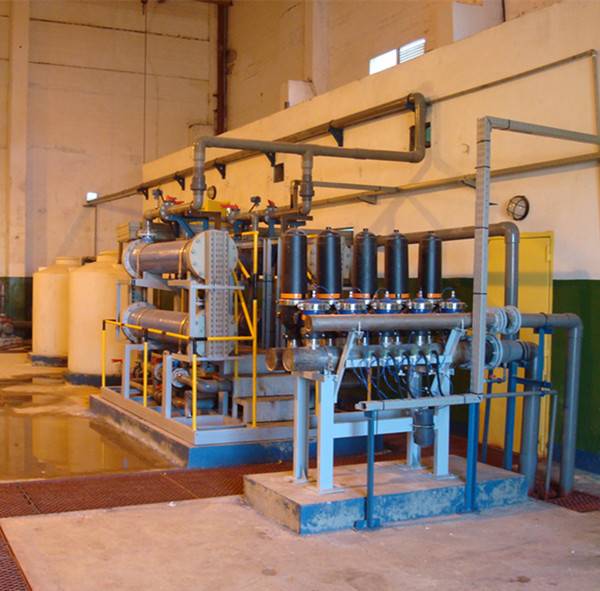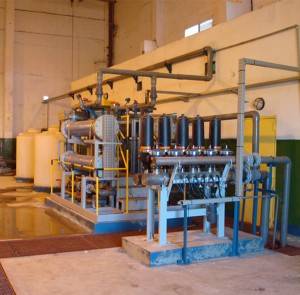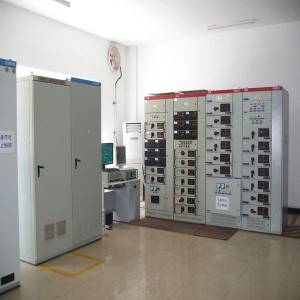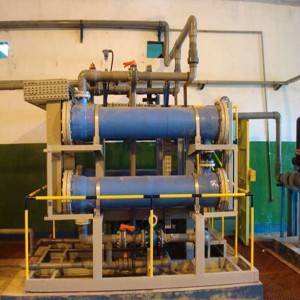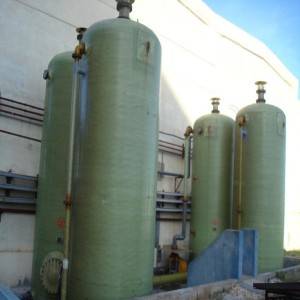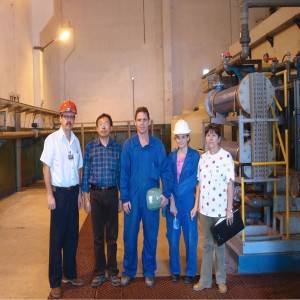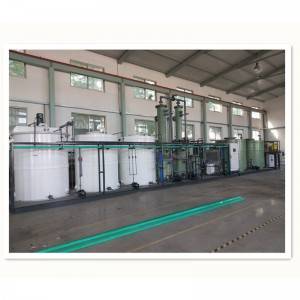nuclear power plant seawater electro-chlorination plant
nuclear power plant seawater electro-chlorination plant,
nuclear power plant seawater electro-chlorination plant,
Explanation
Seawater electrolysis chlorination system take use of natural seawater to produce on-line sodium hypochlorite solution with concentration 2000ppm by seawater electrolysis, which can effectively prevent the growth of organic matter on the equipment. The sodium hypochlorite solution is directly dosed to sea water through the metering pump, effectively control the growth of the sea water microorganisms, shellfish and other biological. and is widely used in the coastal industry. This system can meet the seawater sterilization treatment of less than 1 million tons per hour. The process reduces potential safety hazards related to the transportation, storage, transportation and disposal of chlorine gas.
This system has been widely used in large power plants, LNG receiving stations, seawater desalination plants, nuclear power plants, and seawater swimming pools.
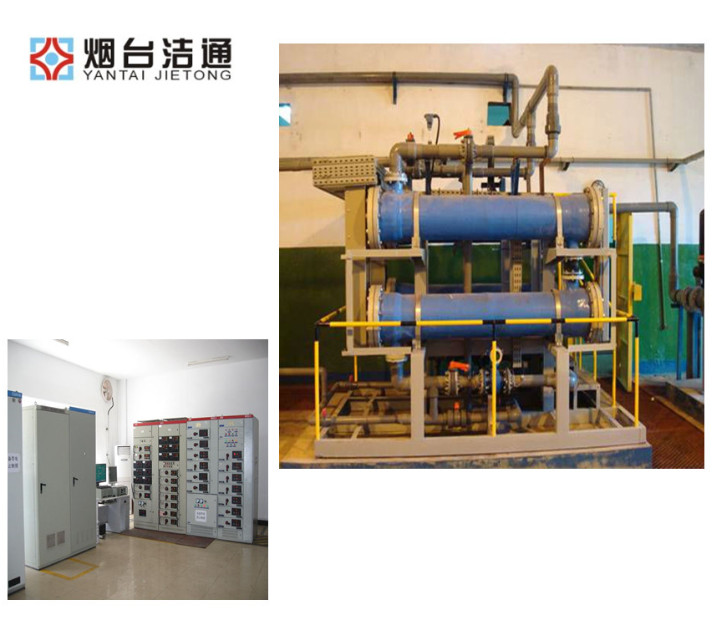
Reaction Principle
First the seawater passes through the seawater filter, and then flow rate is adjusted to enter the electrolytic cell, and direct current is supplied to the cell. The following chemical reactions occur in the electrolytic cell:
Anode reaction:
Cl¯ → Cl2 + 2e
Cathode reaction:
2H2O + 2e → 2OH¯ + H2
Total reaction equation:
NaCl + H2O → NaClO + H2
The generated sodium hypochlorite solution enters the sodium hypochlorite solution storage tank. A hydrogen separation device is provided above the storage tank. The hydrogen gas is diluted below the explosion limit by an explosion-proof fan and is emptied. The sodium hypochlorite solution is dosed to the dosing point through the dosing pump to achieve sterilization.
Process flow
Seawater pump → Disc filter → Electrolytic cell → Sodium hypochlorite storage tank → Metering dosing pump
Application
● Seawater Desalination Plant
● Nuclear power station
● Sea Water Swimming Pool
● Vessel/Ship
● Coastal thermal power plant
● LNG Terminal
Reference Parameters
|
Model |
Chlorine (g/h) |
Active Chlorine Concentration (mg/L) |
Seawater flow rate (m³/h) |
Cooling water treatment capacity (m³/h) |
DC Power consumption (kWh/d) |
|
JTWL-S1000 |
1000 |
1000 |
1 |
1000 |
≤96 |
|
JTWL-S2000 |
2000 |
1000 |
2 |
2000 |
≤192 |
|
JTWL-S5000 |
5000 |
1000 |
5 |
5000 |
≤480 |
|
JTWL-S7000 |
7000 |
1000 |
7 |
7000 |
≤672 |
|
JTWL-S10000 |
10000 |
1000-2000 |
5-10 |
10000 |
≤960 |
|
JTWL-S15000 |
15000 |
1000-2000 |
7.5-15 |
15000 |
≤1440 |
|
JTWL-S50000 |
50000 |
1000-2000 |
25-50 |
50000 |
≤4800 |
|
JTWL-S100000 |
100000 |
1000-2000 |
50-100 |
100000 |
≤9600 |
Project Case
MGPS Seawater Electrolysis online Chlorination System
6kg/hr for Korea Aquarium
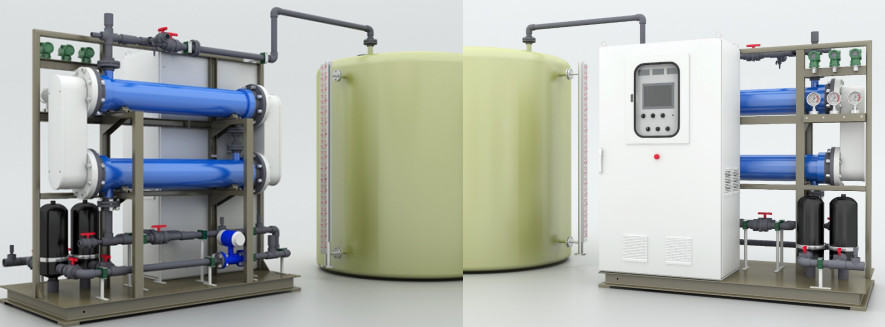
MGPS Seawater Electrolysis online Chlorination System
72kg/hr for Cuba power plant
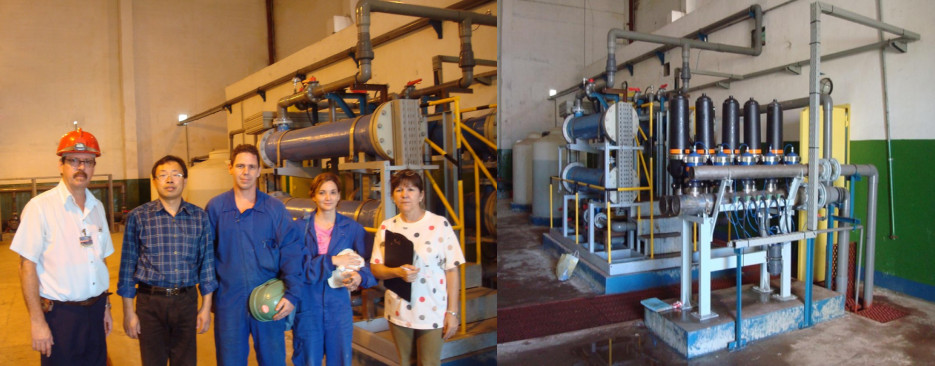 Seawater electro-chlorination is a process that uses an electric current to convert seawater into a powerful disinfectant called sodium hypochlorite. This sanitizer is commonly used in marine applications to treat seawater before it enters a ship’s ballast tanks, cooling systems and other equipment. During electro-chlorination, seawater is pumped through an electrolytic cell containing electrodes made of titanium or other non-corrosive materials. When a direct current is applied to these electrodes, it causes a reaction that converts salt and seawater into sodium hypochlorite , optimize the prevention of marine growth while minimizing the impact of the system on marine life. seawater electrolysis chlorine system is an important tool for maintaining the safety and efficiency of marine equipment and structures.
Seawater electro-chlorination is a process that uses an electric current to convert seawater into a powerful disinfectant called sodium hypochlorite. This sanitizer is commonly used in marine applications to treat seawater before it enters a ship’s ballast tanks, cooling systems and other equipment. During electro-chlorination, seawater is pumped through an electrolytic cell containing electrodes made of titanium or other non-corrosive materials. When a direct current is applied to these electrodes, it causes a reaction that converts salt and seawater into sodium hypochlorite , optimize the prevention of marine growth while minimizing the impact of the system on marine life. seawater electrolysis chlorine system is an important tool for maintaining the safety and efficiency of marine equipment and structures.


